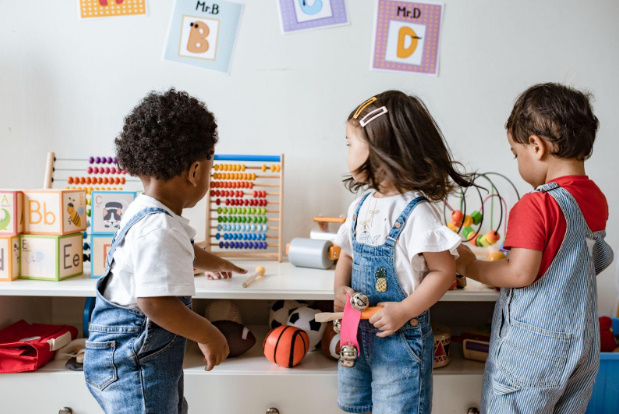Early childhood education is critical in shaping how children think, communicate, and relate to the world around them. A strong preschool curriculum goes beyond worksheets and routines—it thoughtfully integrates developmental theory, pedagogical best practices, and respect for each child’s unique way of learning.
Parents exploring options for a preschool in Aventura may encounter a range of educational approaches. While philosophies and classroom designs vary, intentional curriculum design always shares specific, research-driven elements. These components ensure the learning experience is meaningful, developmentally appropriate, and grounded in academic and emotional growth.
Below are six essential pillars that form the backbone of an intentional early learning program.
1. Child-Centered Planning Based on Observation and Interests
At the heart of a purposeful preschool curriculum lies the understanding that children are active constructors of knowledge. Rather than adhering strictly to prepackaged lesson plans, educators observe children’s play, conversations, and emerging curiosities. These insights guide the curriculum and influence which projects, themes, or challenges are introduced.
In a responsive preschool in Aventura, teachers might notice a group of children showing interest in insects during outdoor play. This observation could lead to a multi-week exploration of life cycles, habitats, and storytelling through the lens of bugs. Child-led learning ensures deeper engagement, stronger retention, and more meaningful connections across subjects.
2. Balanced Integration of Developmental Domains
Intentional curriculum design addresses the full range of early development, not just academic skills. Children’s cognitive, physical, emotional, and social needs are interconnected and must be nurtured simultaneously.
Activities promote fine motor development (such as cutting or painting), gross motor growth (climbing or balancing), early math and literacy concepts, emotional literacy, and interpersonal communication. These skills are not taught in isolation but embedded in play-based, real-life contexts. For example, measuring ingredients during cooking supports math development, while working in pairs cultivates cooperation and language skills.
When all domains are interwoven, the result is a well-rounded learning experience that meets each child where they are.
3. Rich, Open-Ended Materials That Invite Inquiry
The environment in an intentional preschool is designed to inspire curiosity and support exploration. Classrooms are equipped with materials that have no single intended use—blocks, fabric, shells, water, clay, and other loose parts allow children to experiment, build, sort, and create according to their ideas.
These tools invite children to investigate problems, test hypotheses, and share ideas with peers. Rather than focusing on product-driven crafts or rigid tasks, open-ended resources support creativity, problem-solving, and independent thinking.
A high-quality learning space is visually appealing and serves a pedagogical purpose. Every material is intentionally chosen to provoke thought and invite meaningful engagement.
4. Integrated Opportunities for Language and Literacy Development
Language is more than vocabulary; it is the tool through which children express needs, share discoveries, and build relationships. An intentional curriculum offers abundant opportunities for receptive and expressive language development through storytelling, dramatic play, journaling, conversations, and group discussions.
Reading is approached as a multi-sensory, experiential process. Children might retell a favorite story using puppets, draw their versions of the ending, or create a group mural representing the characters. These rich experiences help children build comprehension, phonemic awareness, and confidence with language in its many forms.
Print-rich environments, guided writing opportunities, and teacher modeling all contribute to a strong foundation in literacy while maintaining joy and playfulness.
5. Emphasis on Social-Emotional Learning and Self-Regulation
Intentional preschool programs recognize that emotional intelligence and social awareness are essential to academic readiness. Daily routines are filled with moments that support self-regulation, empathy, and peer connection.
Children learn to recognize and name their emotions, express needs respectfully, and resolve conflicts with teacher support. Tools like peace tables, feeling charts, and group meetings reinforce a culture of kindness and communication.
These practices prepare children to succeed in group learning settings, build strong friendships, and manage challenges with increasing independence. Emotional skills are not “extras” but central to a healthy learning environment.
6. Documentation and Reflection to Deepen the Learning Journey
Educators closely document children’s work, conversations, and creative processes in an intentional curriculum. These observations are then used to assess progress, adjust the curriculum, and revisit ideas with the children.
Documentation can take many forms: photographs, drawings, quotes, journals, and portfolios. These artifacts tell the story of each child’s thinking and growth, allowing educators, families, and children to reflect on learning over time.
Displaying children’s work with context reinforces the value of their thoughts and encourages metacognition. When children revisit earlier ideas, they develop deeper understanding, critical thinking, and pride in their progress.
Creating a Framework That Honors the Whole Child
Families benefit from understanding the intentional choices behind every classroom element when selecting a preschool. A high-quality curriculum doesn’t simply teach academic content—it empowers children to explore their world, express themselves, connect with others, and build confidence in their abilities.
In a thoughtfully designed preschool in Aventura, curriculum is not a checklist—it’s a living, evolving framework that adapts to the unique individuals within it. Programs grounded in these foundational elements ensure that early education remains joyful, relevant, and deeply impactful for every child who walks through the door.

